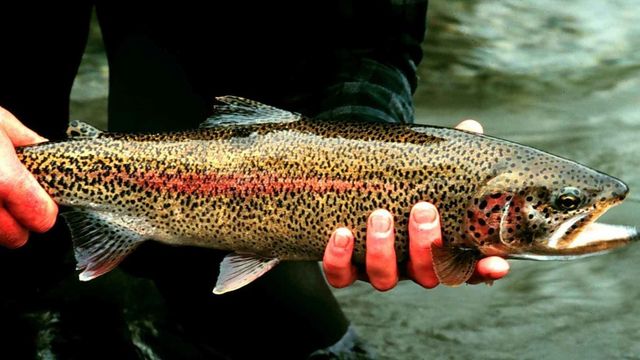
7 Things You Need To Start Trout Fishing
Trout have reached almost mythical status among anglers for a reason. They are gorgeous, mercurial in nature, hard fighters, and possess a unique charm that distinguishes them from other freshwater species. They are also at home in some of the most pristine and picturesque waterways in the country, making trout fishing something of a religious experience for the die-hards.
Additionally, there are trout fishing opportunities in much of the country – including the south, where cold reservoir tailraces have created vibrant trout fisheries in places where they are not historically native.
So, you got yourself a Trout Mystery Tackle Box, and now you want to get started trout fishing? Here’s what you’ll need.
1. Waders
Although they’re adapted to survive just fine in lakes and reservoirs, trout are predominantly a stream fish. They are also cold water species that prefer water temperatures most anglers consider too frigid to dip more than a toe in. So, if you want to wade for trout – pick yourself up a good pair of hip boots or chest waders. The first time you have to jump in to cross that cold creek you’ll be singing their praises.
2. A Fishing Vest
Because you’re wading, you can only bring what you can carry on your back. A good trout vest will pay for itself in no time by giving you plenty of space to carry tackle and all the essential tools you’ll need for a day on the creek. Vests are made to fit any budget, and will dramatically increase the amount of gear you can carry.
3. A Rod/Reel
Pretty self-explanatory, but in order to catch trout you will need a rod and reel. Trout can be caught easily on both spinning and fly rods, so pick your poison. If you’re a spin fisherman, opt for something shorter and sensitive, like a 5 to 6 foot light or ultralight model spooled with 4 or 6 pound monofilament. For fly anglers, the most popular rods are 7 ½ to 9 foot models in the 4-6 weight range with either floating or weight-forward lines.
Shop Trout Combos Here
4. Bait
Spin fihshig also called conventional anglers will want to outfit themselves with a variety of baitfish imitators, like small inline spinners, spoons, and minnow baits. Trout will also strike small crawfish and insect imitators. Fly anglers should start out with a half dozen common wet and dry patterns, like the woolly bugger, elk hair caddis, simple scud, light cahill, and grasshopper. Trout anglers also keep it simple, as trout are known to strike doughbait, powerbait, or clumps of salmon eggs.
5. A Landing Net
Because you’re going to be landing them on light line – it’s more important to have a landing net while trout fishing than when fishing for other species. They are hardy fighters that don’t give up easily, and many anglers’ hearts have been broken when they try to land a trout without a net. Trout also have more delicate skin than many other species, and a good net will protect their slime coat so they can swim away unharmed.
6. Forceps
Trout have teeth, and narrow bony mouths that make unhooking them a chore for even the deftest fingered anglers. A good pair of hemostats or forceps will ensure that caught trout can be quickly unhooked without too much damage to both the fish, and the angler. You don’t want to be the guy that lips a trout as if it were a bass – your thumb will thank you!
7. A Trout Mystery Tackle Box
If you're a beginner to trout fishing and don't know exactly what to throw at them, let us pick for you! Every month you'll receive a box full of baits PERFECT for plucking big rainbows, browns and brooks from any river or stream you can get to. Follow the link here to start your subscription!
Updated April 26th, 2022 at 8:05 AM CT
